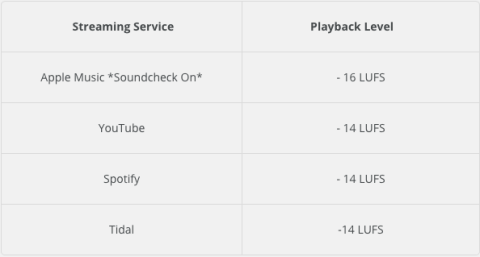Loudness standards is an incredibly important part of audio, especially with multi media contents such as audio for TV and movies. It is always extremely important to measure loudness before it is sent for release, for all types of audio media. The international telecommunication unions BS.1770 high recommendation is international and is basically the most important broadcast standard as most standards are based on it (Transom, 2016). The ITU standards concerns broadcast loudness and true-peak levels of measurement, and the loudness part of it is based around Leq measurement emplying the K-weighitng, which is a very specific frequency weighting developed buy the communication research centre (Transom, 2016).
Loudness, K-weighted, relative to full scale (LKFS) is the loudness standard designed to enable normalization to audio levels for delivery of broadcast TV and other videos. Loudness units are relative to full scale (LUFS) is a term for LKFS that was introduced in EBU R128 . Loudness units (LU) is an additional unit which is used when using EBU R128. It describes LU without direct absolute reference and therefore describes loudness levels and their differences (Broadcast Standards, 2017). Having these standards is crucial for all TV, movie, and audio formats.
Whats the point?
There is a major importance with having these standards for broadcasting networks as if we didn’t the levels on TV and movies would constantly change. Imagine sitting at home watching TV and constantly having to change the volume of the TV (Broadcast Standards, 2017), it would be extremely annoying for people watching, and would lead to non-stop complaints throughout the world.
 This video gives a quick in depth look into understanding loudness standards:
This video gives a quick in depth look into understanding loudness standards:
I have been working on a project recently for a artist where I have produced his latest EP for him. He expressed to me the idea in the future, if he gets the opportunity he’d love to upload the EP or a few of the songs to Spotify. Knowing this I figured id have to put his songs onto the spotify loudness standards.

As you can see on the image above the standard playback level for Spotify is -14LUFS (Mastering The Mix, 2017). This identifies that I will have to master his music to this level. On a side note it is a good sign that Youtube and Tidal are also at this playback level, so say he wanted to make a music video and put it on Youtube for one of the songs, it wouldn’t be an issue.
There is a plugin called LEVELS which I have used to figure out how to get the levels for his songs to the needed Spotify playback level: 
This video gives detail on how to use this plugin:
References:
Transom. 2016. The Audio Producer’s Guide To Loudness – Transom. [ONLINE] Available at:https://transom.org/2015/the-audio-producers-guide-to-loudness/. [Accessed 12 December 2017].
Broadcast Standards – Loudness | TC Electronic . 2017. Broadcast Standards – Loudness | TC Electronic. [ONLINE] Available at: http://www.tcelectronic.com/loudness/broadcast-standards/. [Accessed 12 December 2017].
OP 59 and Loudness Standards for Australian TV | Sound and Code. 2017. OP 59 and Loudness Standards for Australian TV | Sound and Code. [ONLINE] Available at: http://www.sandymilne.com/op-59-and-loudness-standards-for-australian-tv/. [Accessed 12 December 2017].
Mastering The Mix. 2017. Mastering for Soundcloud, Spotify, iTunes and Youtube. | Mastering The Mix. [ONLINE] Available at: https://www.masteringthemix.com/blogs/learn/76296773-mastering-audio-for-soundcloud-itunes-spotify-and-youtube. [Accessed 12 December 2017].
Leave a comment